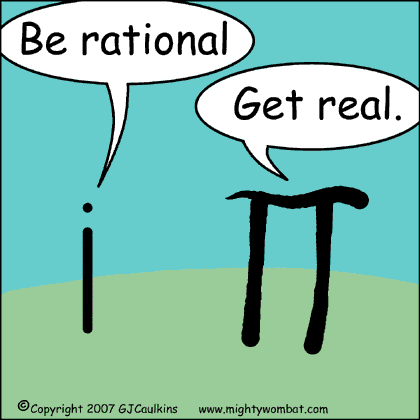y=10^x y=log x or x=10^y
Domain: all reals x>0
Range: y>0 all reals
x-int.: none (1,0)
y-int.: (0,1) none
Asymptote: x-axis y-axis
After, we did some examples without our calculators. The first problem we looked at was log 10^100. In order to figure it out, we set in up as 10^? = 100. From there it was easy to figure out that the answer was two. We then moved on to decimals. The next problem was log 10^0.1. In order to figure it out we changed it to 10^? = 1/10. We then figured out that our answer was -1.
Some more examples are:
log 10^ 1,000 = 3 log 10^ 10 = 1 log 10^ 1000000 = 6
log 10^ 5 = .669 log 10^ 30 = 1.477
It is important to notice that log 10^ (-100) does not work. This is because you can't raise 10 to a value and get a negative number. Another important thing to notice is that the base does not have to be 10. A problem can be log 9^ 81.
The next set of problems that we did were very similar to the previous examples. However, they did not included a base number. When logs do not have a base number, it can be assumed that 10 is the number. "Log x is called the common logarithm, so log 10^x is the same as log x."
Examples:
log 10000= 4 -This is because you assume the equation is written as log 10^ 10000.
log (o.oo1) = 3 log 10 = 1 log 7 = .8451 log 316 = 2.4997
We were then introduced to another set of equations. Log x = 4. It looked difficult, however, using the two methods we previously learned, it was pretty simple. First we put in 10 as the base because we learned that you can assume a log without a base is 10. Then we changed the equation around to read 10^4 = ?. This equation resembled the ones we had done previously. We then used our green cards and found that x = 10,000.
The last lesson of the day was the conceptual question., "Between what two integers is log 7598?" To solve this we asked ourselves 10^ ? = 7598. We then plugged in number for 10^ ? and found minimum and maximum values of 3 and 4. These two numbers worked because 10^ 3 = 1,000 and 10^ 4 = 10,000. We knew that 3 and 4 were the two integers because 7598 fit in the middle of them.
Examples:
log 172: log .4:
10^ ? = 172 10^ ? = .4
10^ 2 = 100 10^ 0 = 1
10^ 3 = 1,000 10^ -1 = .1
Answer is 2 and 3 because 172 fits in Answer is 0 and -1 because .4 fits in
between 10^2 and 10^3. between 10^0 and 10^-1.
If you still need help the 9.5 notes are located on moodle. Also the homework for tonight is 905 - 1, 3-11, 14-16, 18, 21-23.
